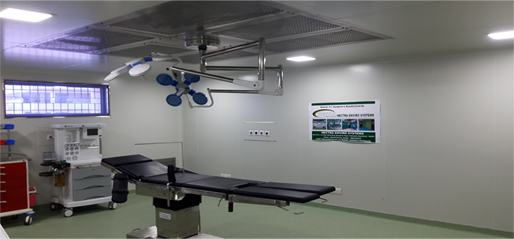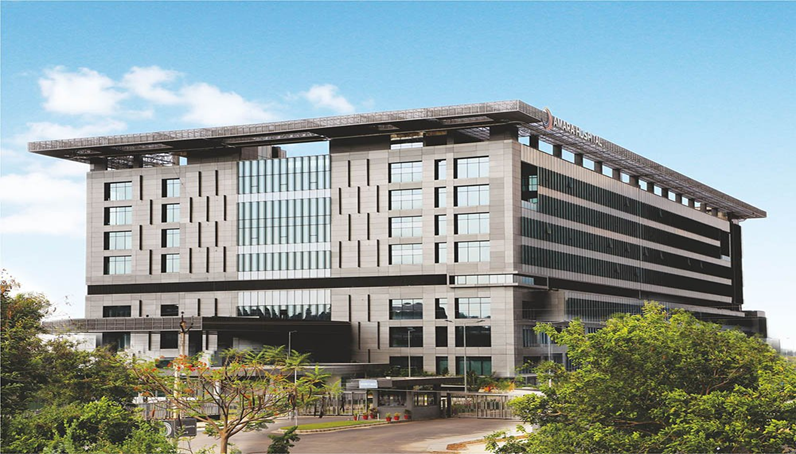Plot.No-399, F.F, Block–L, Lane-11, Mahipalpur Extension, New Delhi 110037

Hospital & OT Doors
HVAC System Design for Multi-Specialty Hospital
Hospital air conditioning is always considered as high sensitive issue while planning with other services. Recently completed healthcare project by Cool Earth Team is a multi-specialty hospital located in Tirupati, Amraja Hospitals, where two aspects were very important. One is the high end HVAC system required for healthcare and second is the height restriction in between false ceiling and slab to run all services. Another challenge came while crossing the ducts and pipes within the beams. Care has been taken to provide all modern facilities available in this type of hospitals where construction area is nearly 6,000 square feet.
Control of infection sources and its measures in Operation Rooms
Infectious bacteria are transported by air. Droplet or infectious agents of 5 mm or less in size can remain airborne indefinitely. It has been shown that 90 to 95 per cent effective filters remove 99.9 per cent of all bacteria present in hospitals. Epidemiological evidence and other studies indicate that many of the airborne viruses that transmit infections are sub- micron in size, thus, there is no known method to effectively eliminate 100 per cent of the viable particles. HEPA filters or Ultra-Low Penetration (ULPA) filters provide the greatest efficiency currently available. Considering this, the isolation rooms with appropriate ventilation pressure relationships have provided to prevent the spread of airborne viruses in the hospital environment.
Use of Treated Fresh Air system in entire premises
Treated Fresh Air (TFA) has a major role to play in hospitals. Outdoor air in comparison to room air is virtually free of bacteria and viruses. Infection control problems frequently involve a bacterial or viral source within the hospital. Ventilation air dilutes the viral and bacterial contamination within the hospital. Properly designed, constructed and maintained ventilation systems preserve the correct pressure relationship between functional areas; they remove airborne infectious agents from hospital environment. Fresh air at a rate of 15 CFM per person have provided in all rooms and care has been taken that same amount of air get extracted through toilets fans all times so that there is a continuous air change in the premises.

Humidity Control
Bacteriological microorganisms ride on dust particles. Its attract ability to one another is favoured by low relative humidity resulting in increased static energy. High humidity in the hospital enhances the danger of growth of Pseudomonas aeruginosa. Humidity in operation room is believed to contribute to the prevention of dehydration of exposed tissue. At relative humidity of about 50 per cent, a very thin invisible film of moisture forms on the operation equipment and other surfaces. This film of moisture conducts static electricity to earth before a spark producing potential is built up. To minimise the explosion risk, the relative humidity required is 40-65 per cent. VRV Indoor Units have installed with RH indication in the remote controls have provided along with few portable type dehumidifiers.
On Going Project
| Project | Operation Theatre + Others( @ Amraja hospital) Location: Tirupati, AP |
|---|---|
| Nos. of OT Room | 5 Nos. |
| Cooling Area | 6000 Sqft. |
| IAQ | Controlled by Hepa Filter |





Copyright 2019 All Rights Reserved Designed By OGEN Infosystem Website Designing Company in India